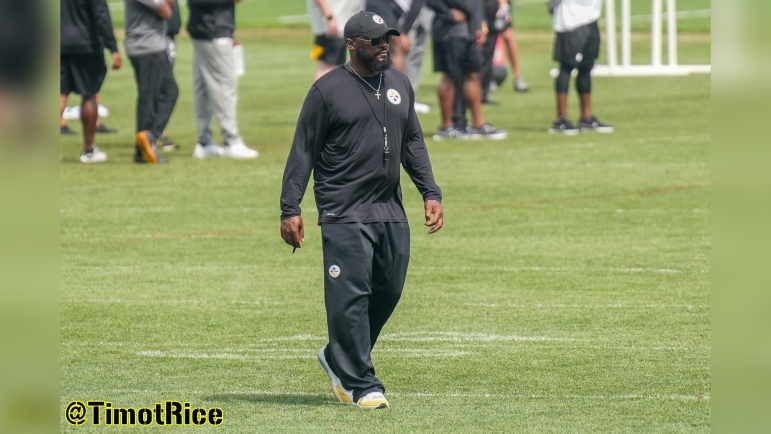From giving performance-based incentives to disciplining with a firm hand, every head coach employs methods to get the most out of their players. From the looks of it, Pittsburgh Steelers’ Head Coach Mike Tomlin has done more than a few things right in his fourteen-year tenure. Steelers President Art Rooney III commented on one Tomlin method that he participated in as a college player.
“It’s kinda fun. They’re having a real ride up there,” Rooney said in an interview during Saturday’s game on KDKA-TV regarding the method. “So every day in practice they’re playing for lobster and steak which is a great incentive.”
In an attempt to add to the offense vs defense competition during practice, Coach Tomlin provides the winning unit the ability to choose their dinner, while the losing unit is limited to the usual cafeteria menu. When asked about the practice, Tomlin noted that it is an old college football practice that he added his twist.
“It is actually an old practice that’s gone on in the college ranks for generations. I participated in it as a college football player,” Tomlin said when asked about the practice by Bob Labriola on Steelers.com. “In the college days, it used to be bad food for the losers. It used to be beans and franks, or bologna, or something like that. We’re a professional football outfit in 2022, so I decided to take it in the other direction.”
As Tomlin goes on to note, this practice is expanded to the coaches as well as the players, and is meant to create a “to the victor goes the spoils” mindset. After all, the game of football is played in the pursuit of victory, and expanding this mindset to the cafeteria is certain to add fire to an already competitive battle in practice. Whether it’s younger players seeking to make the roster or linebacker T.J. Watt coming off winning Defensive Player Of The Year, adding this incentive to practice makes for a more competitive environment.
Coming into this season, many believe that the Steeler’s defense will be the better unit given the team’s financial investment in the likes of Watt, and safety Minkah Fitzpatrick, among others. However, the offense has given them a run for their money, winning 5-2 on Day 12 of practice after initially struggling. As such, one has to wonder how much seeing the team’s offense be escorted to an enhanced cafeteria played a role in their resurgence.
Tomlin has experienced the game of football in many different eras in many capacities. Having played wide receiver at the College of William and Mary, Tomlin went into coaching soon after graduating. In doing so, he started as a wide receiver coach and switched to a defensive backs coach several years after. Perhaps Tomlin’s most notable assistant job was with the Tampa Bay Buccaneers, where he coached the defensive backs on the Super Bowl-winning 2002 defense under former Head Coach Jon Gruden. All in all, Tomlin coached for three NFL teams and four college teams before becoming the Steelers’ Head Coach, giving him the requisite variety in regimes to implement his methods.
The fact that Tomlin added his twist to the old college method speaks to his willingness to incorporate his prior experiences and knowledge of what works and what does not. While giving the winning unit access to higher-quality food does not appear as much, incentive-based motivation goes a long way and just might be a reason for the offensive resurgence of this training camp.








